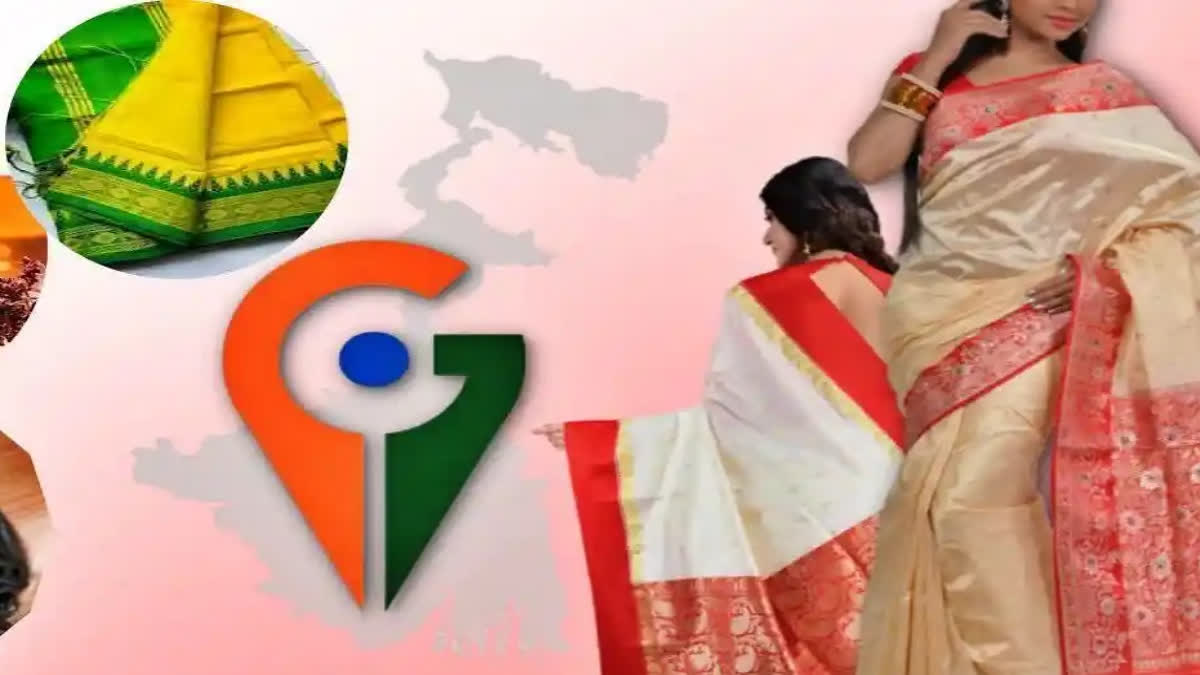New Delhi: A Facebook post by India’s Ministry of Culture a couple of days ago about a traditional saree having its origins in West Bengal has got people in Bangladesh peeved no end and led to the formation of a human chain in a city in India’s eastern neighbour on Saturday afternoon. Early last month, West Bengal was allotted the geographical indication (GI) tag for the Tangail saree, a traditional handwoven saree.
“Three handloom sarees of West Bengal, namely Tangail of Nadia and Purba Bardhaman and Korial and Garad of Murshidabad and Birbhum have been registered and recognised as GI products,” West Bengal Chief Minister Mamta Banerjee had posted on X at that time. She also congratulated the weavers saying that the achievement was due to their hard work.
“I congratulate the weavers for their skills and achievements. We are proud of them. Our congratulations to them," she wrote. Tangail saree is a traditional handwoven saree of West Bengal. It is woven in Purba Bardhaman and Nadia districts of West Bengal. These handlooms are famous for the novelty of saree designs, hand-woven booties, use of natural fibres in the weave and saree fineness of the fabric. These sarees are highly prized for their intricate designs, vibrant colours and lightweight texture, making them popular choices for both casual and festive occasions.
The distinctive features of Tangail sarees often include elaborate borders, artistic pallus (the decorative end piece of the saree), and a variety of motifs inspired by nature, mythology and local traditions. The weaving techniques used in Tangail sarees showcase the craftsmanship and skill of the weavers.
At the time Banerjee posted her comments on X, there was very little headline-grabbing reaction in Bangladesh maybe because the parliamentary elections were around the corner. However, a post made on Facebook by India’s Ministry of Culture a couple of days ago regarding the saree having its origins in West Bengal has got Bangladeshis riled up.
“The Tangail saree, originating from West Bengal, is a traditional handwoven masterpiece,” the Ministry had posted. “Renowned for its fine texture, vibrant colours, and intricate Jamdani motifs, it epitomises the region’s rich cultural heritage. Each Tangail saree is a testament to skilled craftsmanship, seamlessly weaving together tradition and elegance.”
Following this, there has been a wave of reactions by users in Bangladesh to the social media platform. “How does it sound that Hyderabadi Biryani is from Bangladesh?” one user posted. “Tangail is situated in Bangladesh, not in India. Tangail Shari is our Pride!” another user posted.
“We welcome ‘West Bengal’ as the newest division of Bangladesh,” a third user posted. Another post read: “Delhi ka laddu is from Dhaka or Haydrabadi biriyani is from Dhaka. How does that sound?” So, where does the Tangail saree have its origin? Tangail is a district in the Dhaka division of Bangladesh. According to various accounts, the origin of the saree is in the Tangail district of Bangladesh and it is named after the district.
After the partition of the country in 1947, many traditional weavers of this region migrated to Nadia and Purba Bardhaman districts in West Bengal of India. They started the work they learned from their forefathers in Nadia. According to the Textile Focus website of Bangladesh, the handloom industry in Tangail evolved during the last decades of the 19th century. The weavers of these Tangail clothes are the successors of the famous Muslin weavers.
They were originally from Dhamrai and Chowhatta of Dhaka district and were invited to Tangail by the zamindars (landlords) of Delduar, Santosh and Gharana.
“The weavers made settlements in 22 adjacent villages of Tangail,” the website description of the origin of the saree reads. “At first, they weaved only plain cloth. The Swadeshi movement called by Mahatma Gandhi in 1906 aimed to boycott cotton textiles from Lancashire inspired the use of local cotton cloths and the handloom industry in then East Bengal (today’s Bangladesh) flourished at that time. During 1923–24 motifs and designs were introduced to the saree. Jacquard looms were introduced during 1931–1932 for making saree.”
Following the Indian Ministry of Culture’s post, a human chain was formed on Saturday afternoon from the Tangail Press Club in protest against India’s claim, according to a report in the Dhaka Tribune. The report stated that Mueed Hasan Tarit, founder of Shishuder Jonno Foundation, a voluntary organisation for the welfare of children, social activist Nadiur Rahman Akash, and others spoke on the occasion.
“Speakers at the time said the Tangail saree is Bangladesh’s pride and India should not get recognition for it,” it stated. “They added that India’s demand is unreasonable and appropriate action should be taken in this regard.” According to another report in the Daily Star, Deputy General Manager (DGM) of the Bangladesh Handloom Board, Ratan Chandra Saha, said that they were unaware of the matter and a meeting would soon be held to address the issue.
But, the fact of the matter is that generations of weavers have been making the Tangail saree in the Nadia and Purba Bardhaman districts of West Bengal. The West Bengal State Handloom Weavers Cooperative Society applied for a GI tag for the Tangail saree on September 8, 2020. The Geographical Indications Registry gave the certification on January 2, 2024, and it will remain valid till September 7, 2030.
At the same time, it is worth noting that the title under which the GI tag has been given is “Tangail Saree of Bengal” or Banglar Tangail Saree in Bengali language. This, one hopes, can end the tangle over the Tangail saree.
Read more: Five Bengal Products Including Sundarbans Honey Get GI Tag



